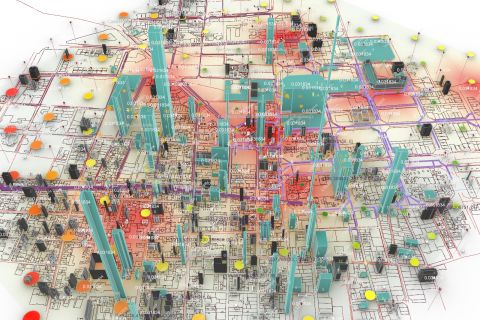bit to delimit strings at the left, where the operation would start at the right. This bit had to be clear in all other parts of the string. This meant that, while the IBM 1401 had a seven-bit word, almost no-one ever thought to use this as a feature, and override the assignment of the seventh bit to (for example) handle ASCII codes.
Early microcomputer software relied upon the fact that ASCII codes do not use the high-order bit, and set it to indicate the end of a string. It must be reset to 0 prior to output
bit to delimit strings at the left, where the operation would start at the right. This bit had to be clear in all other parts of the string. This meant that, while the IBM 1401 had a seven-bit word, almost no-one ever thought to use this as a feature, and override the assignment of the seventh bit to (for example) handle ASCII codes.
Early microcomputer software relied upon the fact that ASCII codes do not use the high-order bit, and set it to indicate the end of a string. It must be reset to 0 prior to output
bit to delimit strings at the left, where the operation would start at the right. This bit had to be clear in all other parts of the string. This meant that, while the IBM 1401 had a seven-bit word, almost no-one ever thought to use this as a feature, and override the assignment of the seventh bit to (for example) handle ASCII codes.
Early microcomputer software relied upon the fact that ASCII codes do not use the high-order bit, and set it to indicate the end of a string. It must be reset to 0 prior to output
bit to delimit strings at the left, where the operation would start at the right. This bit had to be clear in all other parts of the string. This meant that, while the IBM 1401 had a seven-bit word, almost no-one ever thought to use this as a feature, and override the assignment of the seventh bit to (for example) handle ASCII codes.
Early microcomputer software relied upon the fact that ASCII codes do not use the high-order bit, and set it to indicate the end of a string. It must be reset to 0 prior to output
bit to delimit strings at the left, where the operation would start at the right. This bit had to be clear in all other parts of the string. This meant that, while the IBM 1401 had a seven-bit word, almost no-one ever thought to use this as a feature, and override the assignment of the seventh bit to (for example) handle ASCII codes.
Early microcomputer software relied upon the fact that ASCII codes do not use the high-order bit, and set it to indicate the end of a string. It must be reset to 0 prior to output



